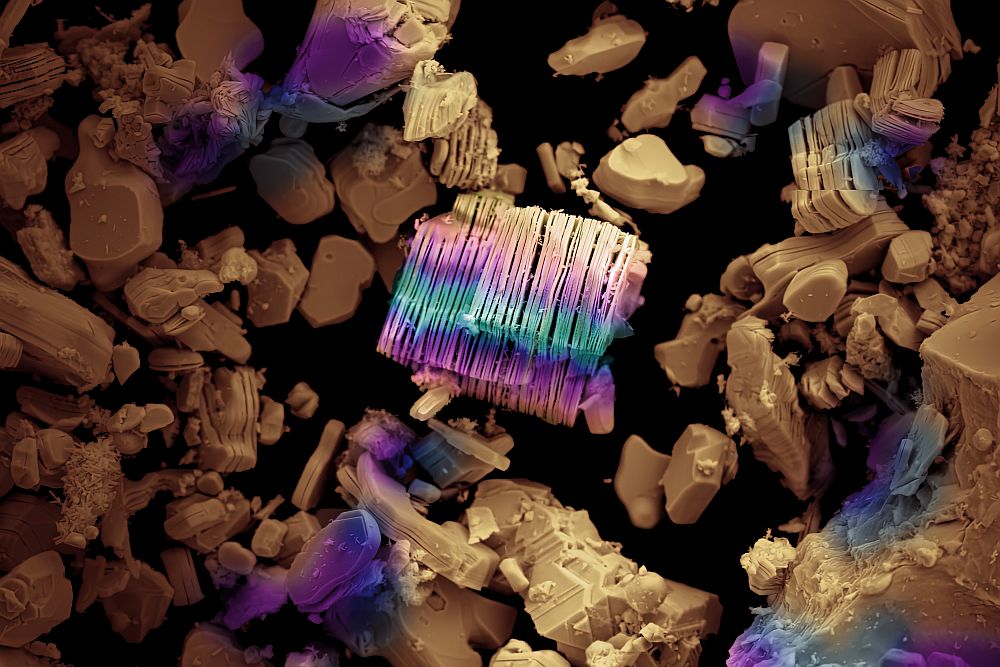
[Image above] Chemical reactions can be complex, and a recent study reveals new insights into one such process: the Mars-van Krevelen mechanism. Credit: New Africa, Shutterstock
With the push to adopt more environmentally friendly industrial practices and energy sources, catalyst research has experienced a corresponding rise in interest.
Catalysts are substances that enable chemical reactions to proceed at faster rates or under different conditions (e.g., at a lower temperature) than otherwise possible. They are essential in many of today’s fastest-growing green sectors, such as hydrogen production and carbon dioxide utilization.
Among the numerous catalytic reaction pathways, the Mars-van Krevelen mechanism is widely applied in processes that involve solid catalysts (typically metal oxides) and gaseous reactants, such as hydrocarbon oxidation and catalytic cracking. This cyclical redox mechanism involves several steps:
- The reduction of the catalyst by a reactant (typically an organic molecule). Oxygen is lost from the lattice, leaving oxygen vacancies on the catalyst’s surface.
- The reduced catalyst is then re-oxidized by reacting with gaseous oxygen, which fills the vacant sites on the catalyst surface.
- The catalytic reaction cycle repeats, with another round of reduction and re-oxidation. (An example of a simple oscillating reaction is demonstrated here.)
This direct involvement of the catalyst within the reaction—through the transfer of its lattice oxygen atoms—is unique because in most cases, catalysts act only as spectators in catalytic mechanisms.
Although the explanation above makes the Mars-van Krevelen mechanism sound like a well-understood process, there is scant experimental evidence proving the details of this reaction. Prior studies largely inferred oxygen dynamics and transient surface states indirectly, lacking the spatiotemporal resolution to correlate surface restructuring with reactivity in real time.
In a recent groundbreaking paper that was 10 years in the making, nearly 20 researchers from multiple institutions provide direct visualizations of the Mars-van Krevelen mechanism. They achieved this feat by integrating in-situ environmental transmission electron microscopy (TEM) with multimodal spectroscopy and computational modeling to better understand the mechanism at atomic resolution.
“From the experiment, we can see the phenomena and reaction now,” says project leader Guangwen Zhou, SUNY Distinguished Professor and Deputy Director of Materials Science and Engineering at the State University of New York at Binghamton, in a news release. “From the modeling side, we can better understand how much energy we need to supply to make it happen first.”
The study focused on cupric oxide (CuO) catalysts under hydrogen exposure. This metal oxide is considered a model system for reactions such as the water–gas shift and methanol synthesis due to its industrial relevance.
The in-situ TEM experiments involved two sequential steps:
- In-situ formation of CuO inside the environmental TEM by oxidizing metallic copper at 300°C in 0.5 Pa of oxygen pressure.
- Switching to hydrogen gas flow (0.5 Pa) to induce the oxide reduction reaction.
The researchers observed oscillatory redox behavior due to the Mars–van Krevelen mechanism. But they also observed a previously unknown, unique behavior of the metal oxide catalyst that allows it to self-regulate during the oscillatory cycle.
During the first step of the redox reaction, when most of the oxide’s topmost oxygen layer is pulled away, the oxygen embedded within the oxide’s internal structure begins to diffuse upward. This inner oxygen, along with the gaseous environmental oxygen, repopulates the oxide’s surface area—thus helping restart the cycle of reactivity.
Details of the whole process are given below:
- Gaseous hydrogen molecules react with surface-level lattice oxygen, which consist mainly of Cu8O7. The reaction forms water molecules that desorb from the surface at elevated temperatures, while at the same time, oxygen vacancies are created at the oxide surface.
- As lattice oxygen are lost, Cu8O2 forms on the surface. Experiments confirmed that both Cu8O7 and Cu8O2 exhibited high surface stability and were not prone to transform into other compositions.
- Because the Cu8O2 surface is stable, the subsurface oxygen can refill oxygen vacancies at the surface, helping convert the surface back to Cu8O7.
The in-situ TEM observations confirmed that the subsurface-to-surface diffusion was the rate-limiting step. Notably, Cu8O7 promoted faster oxygen migration to the surface and less strain buildup. In contrast, Cu8O2 slowed oxygen diffusion, leading to the accumulation of oxygen vacancies in the subsurface, producing more strain. Furthermore, no shrinkage of the oxide area occurred during the Cu8O2 → Cu8O7 transformation, but fast shrinkage occurred when Cu8O7 converted back to Cu8O2.
“Together, these steps create a self-sustaining feedback loop that drives cyclic surface transformations,” the researchers conclude.
In the news release, Zhou says that these findings may enable the design of more sustainable catalysts “that can heal themselves and recover their catalytic behavior.”
“This [behavior] saves a lot of money for the industry level because you don’t have to shut down the reactor [to replace the depleted catalysts],” he says.
The researchers now plan to investigate reaction conditions to see if there are other ways to change or even control the oscillatory behavior.
The paper, published in Proceedings of the National Academy of Sciences, is “Oscillatory redox behavior in oxides: Cyclic surface reconstruction and reactivity modulation via the Mars–van Krevelen mechanism” (DOI: 10.1073/pnas.2422711122).
Author
Laurel Sheppard
CTT Categories
- Basic Science
Related Posts
‘Fairy circles’ may help mark natural underground hydrogen deposits
September 18, 2025


